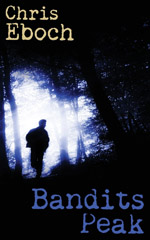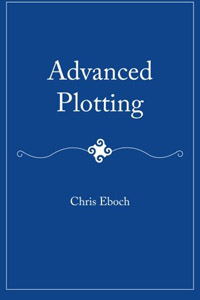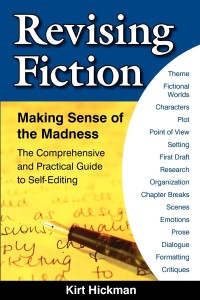by Chris Eboch
Your opening makes a promise about the rest of the story, article, or book. It tells readers what to expect, setting the stage for the rest of the story to unfold—and hopefully hooking their interest.
Genre
The first scene should identify your story’s genre. This can be trickier than it sounds. Say it’s a romance, but the main character doesn’t meet the love interest until later. Can you at least suggest her loneliness or desire for romance? (And get that love interest in there as soon as possible!)
Maybe you’re writing a story involving magic, time travel, ghosts, or a step into another dimension, but you want to show the normal world before you shift into fantasy. That’s fine, but if we start reading about a realistic modern setting and then halfway through magic comes out of nowhere, you’ll surprise your reader—and not in a good way. Your story will feel like two different stories clumsily stitched together.
If you’re going to start “normal” and later introduce an element like magic or aliens, try to hint at what’s to come. Maybe the main character is wishing that magic existed—that’s enough to prepare the reader. In my novel The Ghost on the Stairs, we don’t find out that the narrator’s sister has seen a ghost until the end of chapter 2. But on the opening page, she comments that the hotel “looks haunted” and is “spooky.” Those words suggest that a ghost story may be coming. That’s enough to prep the reader. (The title doesn’t hurt either.)
Setting
Your opening should also identify the story’s setting. This includes when and where we are, if it’s historical or set in another country or world. Once again, you don’t want your reader to assume a modern story and then discover halfway through that it’s actually a historical setting. They’ll blame you for their confusion. In a contemporary story, you may not identify a specific city, but the reader should have a feel for whether this is inner-city, small-town, suburban, or whatever.
Who and What’s Up
Your opening pages should focus on your main character. You may find exceptions to this rule, but your readers will assume that whoever is prominent in the opening pages is the MC. Switching can cause confusion. You should also establish your point of view early. If you’ll be switching points of view, don’t wait too long to make the first switch. In novels, typically you want to show your alternate point of view in the second chapter and then switch back and forth with some kind of regular rhythm.
And of course, you want some kind of challenge or conflict in your opening. This doesn’t have to be the main plot problem—you may need additional setup before your main character takes on that challenge or even knows about it. But try to make sure that your opening problem relates to the main problem. It may even lead to it.
In The Ghost on the Stairs, Tania faints at the end of chapter 1. Jon does not yet know why, but this opening problem leads to the main problem—she’d seen a ghost. If I’d used an entirely different opening problem, say stress with their new stepfather, that would have suggested a family drama, not a paranormal adventure.
The Fast Start
So an opening introduces many elements of the story. Yet you can’t take too long to set the scene, or your readers may lose interest. You want to start in a moment of action, where something is changing, and cut the background. But don’t rush things—take a little time to set up the situation, so it makes sense and we care about the characters and what’s happening to them.
Fast, but not too fast. How do you find the balance?
You can test your opening by seeing how much you can cut. What if you delete the first sentence, the first paragraph, the first page? Does the story still make sense? Does it get off to a faster start? For a novel, what if you cut the whole first chapter, or several chapters? If you can’t cut, can you condense?
On the other hand, if your beginning feels confusing or rushed, you might want to start earlier in the story. Try setting up a small problem that grabs the reader’s attention, luring them in until you can get to the main problem. In my novel, The Well of Sacrifice, the Maya are dealing with famine, disease, and marauders in the early chapters, even before the king dies and an evil high priest tries to take over. That gives readers time to understand these characters and their unusual world.
Don’t stress about the opening during your early drafts, but do make sure you fix it later. Keep in mind that fixing it may involve throwing it out altogether and replacing it with something else or simply starting later in the story. In the end, you’ll have the beginning you need.
 Chris Eboch writes fiction and nonfiction for all ages. In Bandits Peak, a teenage boy meets strangers hiding on the mountains and gets drawn into their crimes, until he risks his life to expose them. The Eyes of Pharaoh is an action-packed mystery set in ancient Egypt. The Genie’s Gift is an Arabian Nights-inspired fantasy adventure. In The Well of Sacrifice, a Mayan girl in ninth-century Guatemala rebels against the High Priest who sacrifices anyone challenging his power. Her writing craft books include You Can Write for Children: How to Write Great Stories, Articles, and Books for Kids and Teenagers and Advanced Plotting.
Chris Eboch writes fiction and nonfiction for all ages. In Bandits Peak, a teenage boy meets strangers hiding on the mountains and gets drawn into their crimes, until he risks his life to expose them. The Eyes of Pharaoh is an action-packed mystery set in ancient Egypt. The Genie’s Gift is an Arabian Nights-inspired fantasy adventure. In The Well of Sacrifice, a Mayan girl in ninth-century Guatemala rebels against the High Priest who sacrifices anyone challenging his power. Her writing craft books include You Can Write for Children: How to Write Great Stories, Articles, and Books for Kids and Teenagers and Advanced Plotting.
Learn more at www.chriseboch.com or her Amazon page, or check out her writing tips at her Write Like a Pro! blog. Sign up for her Workshop newsletter for classes and critique offers.
Chris also writes novels of suspense and romance for adults under the name Kris Bock; read excerpts at www.krisbock.com.
This article was originally published in the October 2011 issue of SouthWest Sage and is reprinted here by permission of the author.




